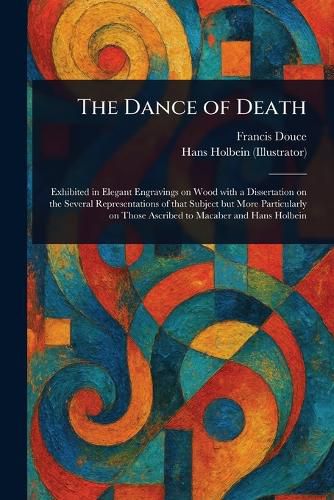Readings Newsletter
Become a Readings Member to make your shopping experience even easier.
Sign in or sign up for free!
You’re not far away from qualifying for FREE standard shipping within Australia
You’ve qualified for FREE standard shipping within Australia
The cart is loading…






This title is printed to order. This book may have been self-published. If so, we cannot guarantee the quality of the content. In the main most books will have gone through the editing process however some may not. We therefore suggest that you be aware of this before ordering this book. If in doubt check either the author or publisher’s details as we are unable to accept any returns unless they are faulty. Please contact us if you have any questions.
"The Dance of Death," featuring the insightful dissertation of Francis Douce, explores the enduring fascination with mortality through the lens of art. This meticulously prepared edition showcases elegant engravings on wood, delving into the representations of death, particularly those attributed to Macaber and Hans Holbein. A significant contribution to art history, this volume examines the "dance of death" motif as it appears across various artistic expressions.
Explore the historical context and artistic merit of these powerful images, originally conceived as illustrations for the Old Testament. Journey through the macabre world of Holbein's woodcuts and other interpretations of this timeless subject. A treasure for enthusiasts of art history and printmaking, "The Dance of Death" offers a unique perspective on a theme that has captivated audiences for centuries. This book is a valuable resource for understanding the evolution and enduring appeal of the "dance of death" in European art.
This work has been selected by scholars as being culturally important, and is part of the knowledge base of civilization as we know it.
This work is in the public domain in the United States of America, and possibly other nations. Within the United States, you may freely copy and distribute this work, as no entity (individual or corporate) has a copyright on the body of the work.
Scholars believe, and we concur, that this work is important enough to be preserved, reproduced, and made generally available to the public. We appreciate your support of the preservation process, and thank you for being an important part of keeping this knowledge alive and relevant.
$9.00 standard shipping within Australia
FREE standard shipping within Australia for orders over $100.00
Express & International shipping calculated at checkout
This title is printed to order. This book may have been self-published. If so, we cannot guarantee the quality of the content. In the main most books will have gone through the editing process however some may not. We therefore suggest that you be aware of this before ordering this book. If in doubt check either the author or publisher’s details as we are unable to accept any returns unless they are faulty. Please contact us if you have any questions.
"The Dance of Death," featuring the insightful dissertation of Francis Douce, explores the enduring fascination with mortality through the lens of art. This meticulously prepared edition showcases elegant engravings on wood, delving into the representations of death, particularly those attributed to Macaber and Hans Holbein. A significant contribution to art history, this volume examines the "dance of death" motif as it appears across various artistic expressions.
Explore the historical context and artistic merit of these powerful images, originally conceived as illustrations for the Old Testament. Journey through the macabre world of Holbein's woodcuts and other interpretations of this timeless subject. A treasure for enthusiasts of art history and printmaking, "The Dance of Death" offers a unique perspective on a theme that has captivated audiences for centuries. This book is a valuable resource for understanding the evolution and enduring appeal of the "dance of death" in European art.
This work has been selected by scholars as being culturally important, and is part of the knowledge base of civilization as we know it.
This work is in the public domain in the United States of America, and possibly other nations. Within the United States, you may freely copy and distribute this work, as no entity (individual or corporate) has a copyright on the body of the work.
Scholars believe, and we concur, that this work is important enough to be preserved, reproduced, and made generally available to the public. We appreciate your support of the preservation process, and thank you for being an important part of keeping this knowledge alive and relevant.